New England Architecture | Guide to House Styles in New England
From Colonial, Georgian, and Federal to Greek Revival and Victorian, here’s a guide to New England architecture for the roadside historian.

Whether they come as leaf peepers, antiques hunters, or Freedom Trailers, travelers in New England frequently find themselves gawking at houses and New England architecture. And no wonder. With nearly 400 years of settlement behind it, New England hosts a collection of architectural styles that are older and more varied than in any other part of the country.
“Name That House!” was originally published in Yankee Magazine in June, 1991.
New England Architecture | Guide to New England House Styles
We probably know more about old houses and New England architecture than we realize. Because we see houses every day and know them from our history lessons, most of us carry around in our heads a subconscious inventory of house forms. In the same way most people can tell a duck from a heron even without knowing its proper name, most people instinctively distinguish a saltbox from a Second Empire and a Cape Cod from a Queen Anne. But knowing some of the distinguishing details, and a little of their history, can deepen one’s appreciation of the unique personality of each town or city one visits. Here, then, is a guide to five common New England house styles dating from 1630 to 1900.
17th-Century Colonial Houses (1630-1700, locally to 1740)
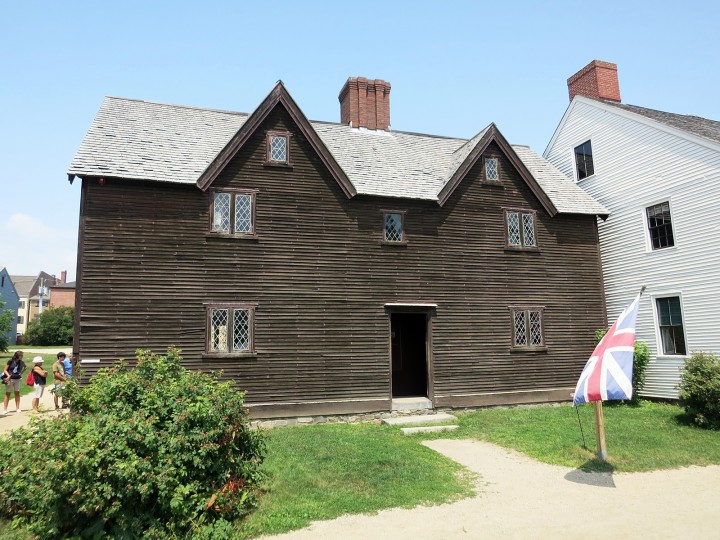
Photo Credit : Aimee Seavey
Colonial houses are usually side-gabled (roof ends at the sides of the house), flat-faced, wooden structures, covered with narrow pine clapboards, although most of the earliest ones had shingles. With no eaves, shutters, stoops, porches, window trim, or door decoration, these houses present a very plain facade, relieved only in some examples by a jutting overhang of the second story – the “garrison” style. Old and heavy, they seem to grow straight out of the ground.
As honest and sturdy as the settlers who built them, these houses were built to take weather. Whenever possible, they were built facing south for winter warmth. Their very steep roofs were designed to shed snow. Small, diamond-paned windows and heavy, vertically planked doors helped keep heat indoors. The massive chimney was usually placed in the center of the roof, but appears as an exterior feature in Rhode Island “stone-enders.”
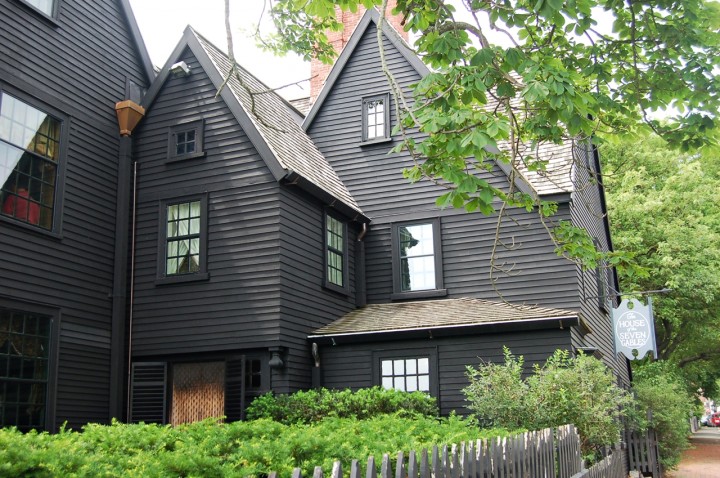
Photo Credit : Aimee Tucker
The original form of Colonial houses was a simple one-room, two-story box. In time, many of the houses were built out backward to make room for growing families and storage goods. The resulting slant-roofed “saltbox” shape was a sure sign that the colonists’ tenuous hold on New England was becoming more secure.
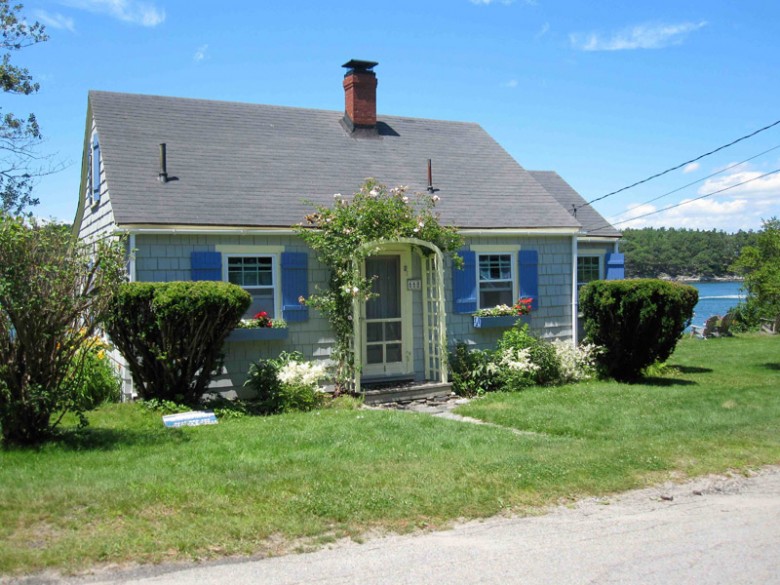
Photo Credit : Annie Graves
A variation on the theme is the classic Cape Cod house — wood frame, 1-1/2 stories high with a pitched roof, little or no space between windows and roof gutter, and no overhang on the gables. The classic is the full Cape, with a central door, and two windows symmetrically on each side. The three-quarters Cape has two windows on one side of the door and only one on the other side; the half Cape has only two windows and a door to their side.
Georgian Houses (1700-1780, locally to 1830)

Photo Credit : Aimee Seavey
In roof form, chimney placement, and cladding, Georgian houses are much like their Colonial predecessors. However, they are bigger, typically two stories high and two rooms deep, and the roofs only moderately pitched. Many were unpainted and often shingled, but some scholars believe they were originally painted in blue-green, salmon, and mustard-yellow colors. What chiefly distinguishes Georgians from Colonials is their civility. As the colonists prospered, their houses became better mannered.
Georgian houses are best identified by the orderly plan of their windows and doors. The window placement on the front facade is absolutely regular. The windows march across the second story, usually at even-spaced intervals and almost always in odd numbers of three, five, or seven across. The lower-story windows appear directly below the uppers with the doorway in the center, making the facade exactly symmetrical. The windows themselves are double-hung, typically with nine to 12 panes per sash.
[text_ad]
Decoration is restrained and focuses on the doorway. The door itself, sometimes a double door, is no longer planked but paneled. Flattened columns flank the door and support an overhead crown, which is most commonly straight or triangular, but is sometimes curved or scrolled. In the high Georgian style, a row of square-toothed dentil molding typically parades along the cornice under the overhanging roof eave.
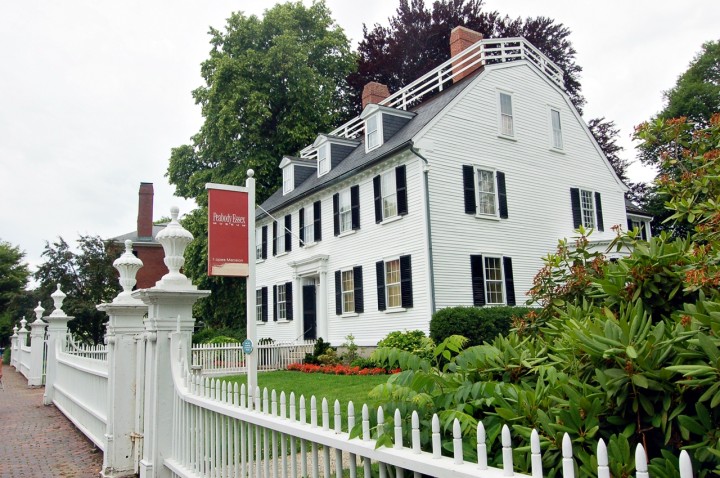
Photo Credit : Aimee Seavey
Georgian houses are like British regimental officers. They are solid, unblinking, upright, and true – and little prone to imagination. They occasionally appear in fancy dress, wearing roof balustrades or pedimented dormers, for instance, but they are essentially soldiers, stoutly defending the good citizens living within their orderly walls.
Adam-Style Houses, Also Called Federal (1780-1820, locally to 1840)
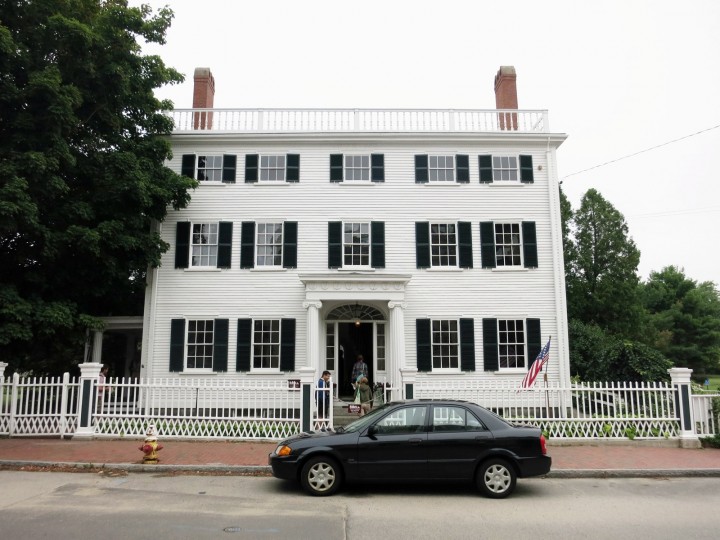
Photo Credit : Aimee Seavey
If Georgian houses are soldiers, Federal houses are burghers and princes. The two styles are closely related, but Federal houses can usually be distinguished by their freer, more elaborate detailing. For quick identification, look at the arrangement of glass below the crown of the front doorway: if there is a row of small rectangular windows, the house is almost certainly Georgian; if there’s an elliptical or semicircular fanlight, it’s probably Federal.
On closer inspection, the entire facade is more “glassy.” Vertical sidelights often flank the entrance, making the doorway larger. To balance it, a large, tripartite Venetian or Palladian window sometimes appears above the door on the second story. The panes in all windows are now bigger, sometimes as large as a foot across, and often number six per sash instead of the usual nine or 12 in Georgian’ houses.
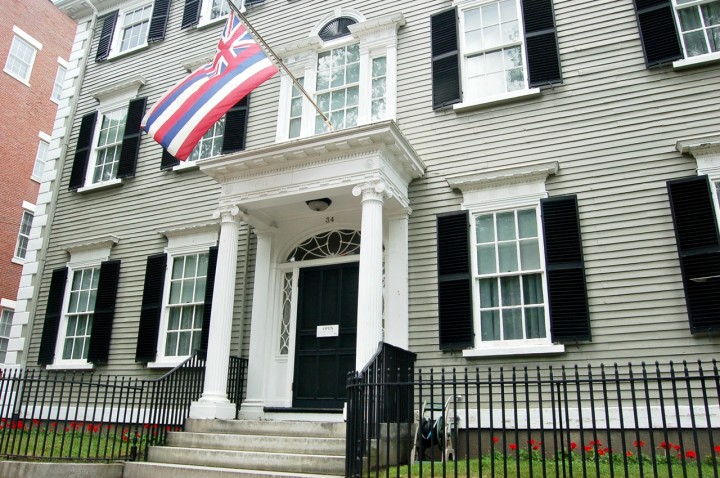
Photo Credit : Aimee Seavey
To draw attention to this generous glasswork, Federalist builders sometimes crowned their windows with lintels or recessed them in arches. They also dropped the top-story windows down from the eaves, where they had crowded against the roof in Georgian houses, thus freeing space for more decorative cornices. Dentil moldings remain popular, but now friezes are sometimes added. These friezes commonly depict free-flowing garlands or swags or a stylized pattern of urns, lotus buds, sheaves of wheat, or medallions. Similar decoration may also appear on doorway surrounds.
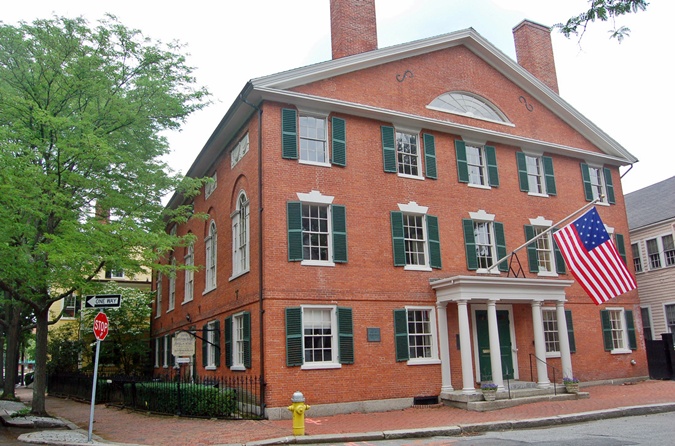
Photo Credit : Aimee Seavey
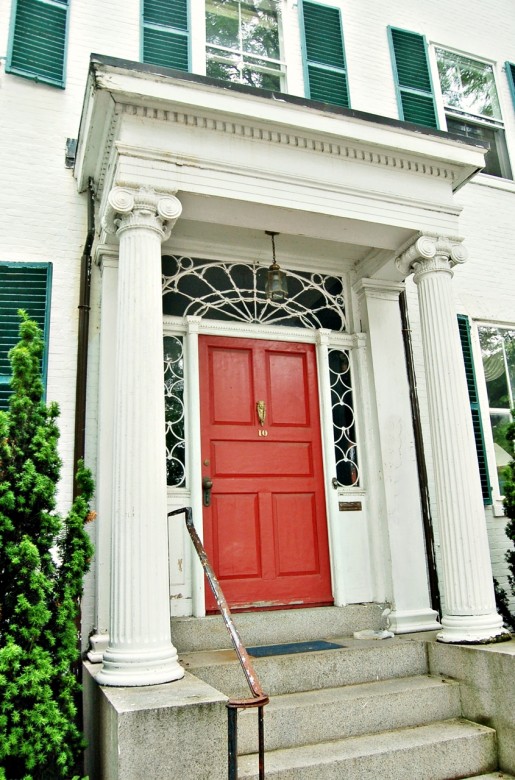
Photo Credit : Aimee Seavey
These Adam-style design elements signal a break from the flat planes and resolute squareness of older Georgian houses. The earlier bas-relief doorway surround becomes elaborated into a small porch in Federal houses, and for the first time bays, bows, and balconies appear on the facade, especially in later high-style examples and in the brick and stone town houses on Boston’s Beacon Hill.
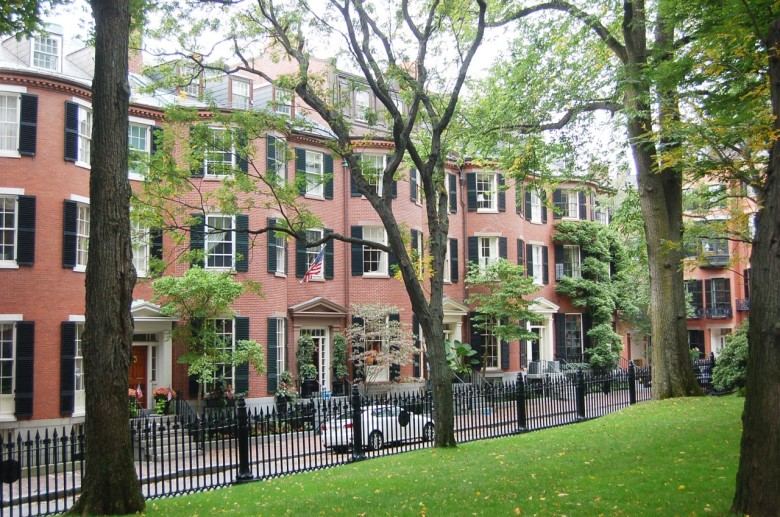
Photo Credit : Aimee Tucker
Dignified, imposing, sophisticated, and sure, Federal houses have an air of self-satisfaction well suited to a people who had but recently won their freedom and intended to make the most of it.
Greek Revival Houses (1830-1850)

Photo Credit : Brenda Darroch
Driving into a sleepy New England town, the traveler may suddenly find himself confronted with the Parthenon. This happens frequently, for in the first half of the 19th century, Americans’ enthusiasm for things democratic spawned a radical backward turn in architecture, all the way back to the public buildings of the original democracy of ancient Greece. The resulting Greek Revival houses are the easiest of all New England house styles to identify because they look so utterly out of place.
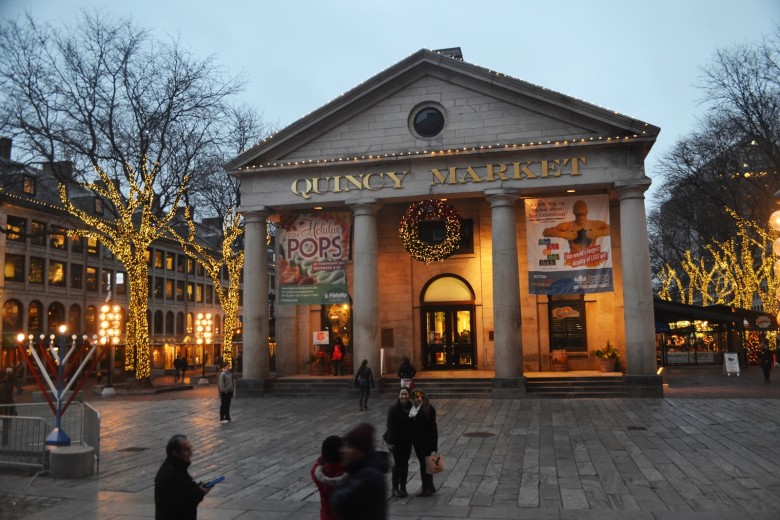
Photo Credit : Aimee Seavey
By 1850 New England’s admiration for the bold, clean lines of classical architecture had waned, but one common feature of Greek Revival houses, especially the high-style ones, endured: the transformation of the old side-gabled house into a front-gabled house. By rotating the house 90 degrees, Greek Revival builders faced the peak of the roof on the street, where the cornice detailing could be shown to better advantage. Later builders, caught up in the craze for Victorian houses, made extravagant use of this simple change of house plan.
Victorian Houses (1855-1900)
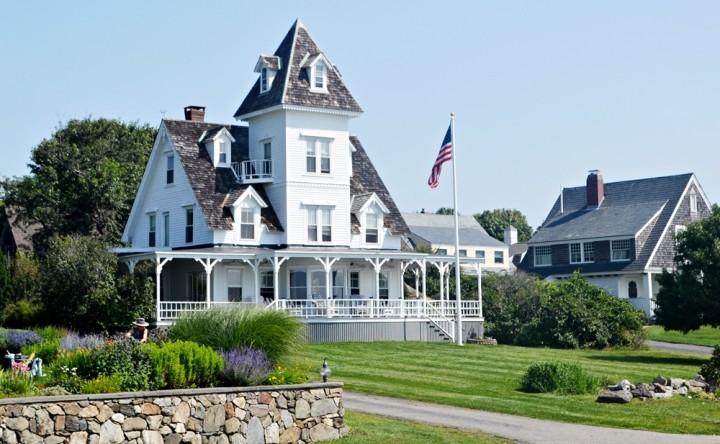
Photo Credit : Aimee Seavey
The Victorians may have been straitlaced in their corsets and tight in their collars, but they were joyous and free in their houses. “Victorian” is not one style but several. It is often described as eclectic, meaning that the houses can look like just about anything. But what it means in this case is that Victorian houses look almost nothing like any of the houses that came before.
Gone are the pediments, pilasters, and porticoes. Gone are the fanlights and transom lights. Gone are 200 years of straight lines, plain faces, and unbending squareness. Weary of balance and symmetry, Victorian houses prefer to show off.
There is so much going on in Victorian architecture, and so much unabashed borrowing, that it is difficult to sort out the individual house styles. But there are some common elements. Steep, many-gabled roofs, irregular floor plans, and an asymmetrical arrangement of windows and doors give Victorian houses their characteristically excited look. Patterned roofs and multi-textured walls show off the builders’ experimentation with curves, arches, hexagons, and other complex shapes. Porches appear everywhere, along with the profusion of fanciful detailing familiarly known as “gingerbread.”
Some Victorian house styles can be distinguished by their “feel,” others by characteristic features.
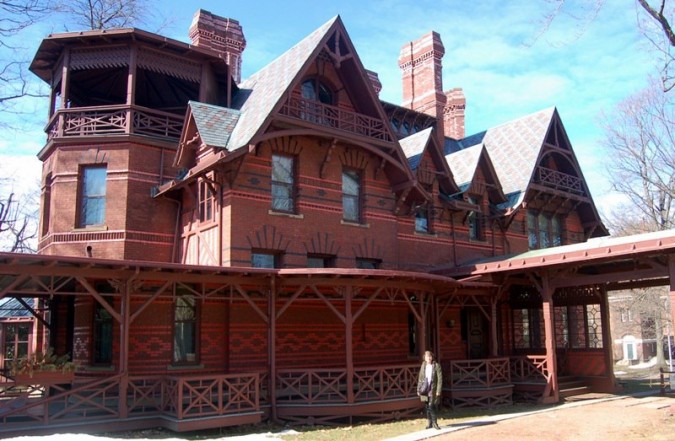
Photo Credit : Aimee Seavey
Second Empire houses are queenly. The diagnostic feature is the mansard roof carried like a crown on decorative brackets. With their projecting central pavilions, very tall windows, and iron roof cresting, these are the most stately of the Victorians. Queen Anne houses often look pointy and sometimes higgledy-piggledy, for it is in this type that the roofs are steepest and building most asymmetrical; corner bays and towers accentuate this effect. Spindlework porches, patterned shingling, and stained glass make this the archetypical gingerbread house.
Shingle houses are covered with shingles from top to toe and have less fancy trim work. With their smooth walls, multi-eaved roofline, and intersecting gables, they give the impression of a ship under full sail.
Are you a fan of historic New England architecture?
More Information on New England Architecture:
An excellent keep-in-the-car reference is A Field Guide to American Houses by Virginia and Lee McAlester (Alfred A. Knopf; revised 2015).
To learn more about historic New England architecture (including houses open to the public) contact Historic New England, 141 Cambridge St., Boston, MA 02114; 617-227-3956.




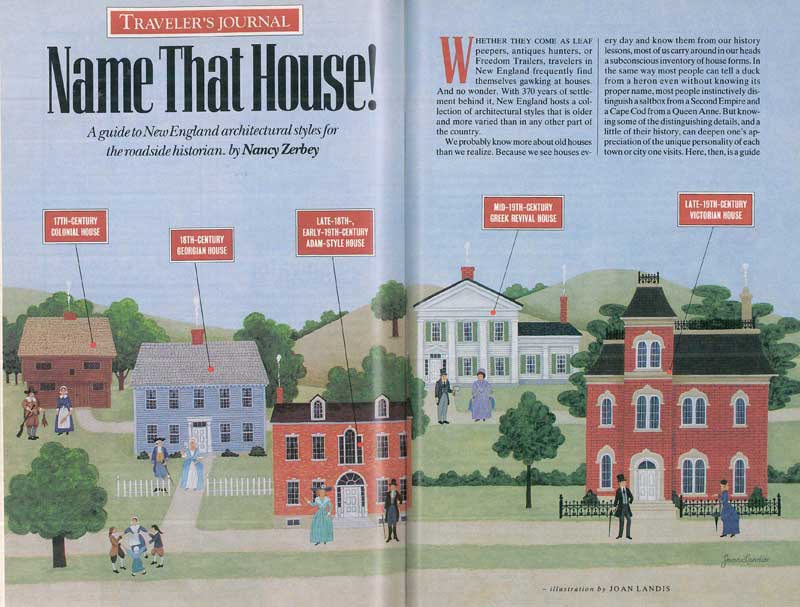


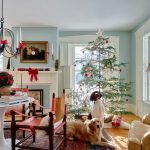
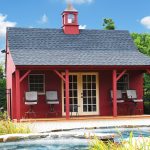
I don’t understand why you showed a photo of the House of the Seven Gables and all you spoke of were Cape Cod cottages and never showed a Cape Cod cottage. The HOTSG is certainly famous, but not a typical New England house. I think people from outside NE readily think of cape codders when they think of NE architecture. Another thing; you show, but don’t mention, the gambrel roofs shown. I’m very sure that anyone seeing a house in that style for the first time will notice the different roof line and not the arrangement of the windows. I’m almost 90 years old, born and bred in central Mass. and am very familiar with NE homes, having lived in 14 of them in my life from Cape Cods to 3-deckers to colonials to a post-civil war farm house.
Hi Norman. The text of this post was written for Yankee in 1997, but only featured the pictured opening illustrated spread for art. We tried to add in photos of known New England houses in the styles mentioned by the original author where we could. We’ll do our best to get a classic Cape photo in there! Thank you for your comment.
Or, you could just visit Newport, RI and see very fine examples of all these types of architecture, and more, in one city.
My very favorite houses are the Victorians and the Capes. We live in a cape cod house here in Virginia. We tweaked a few things so I guess it’s a modern version.
having grown up in a Greek Revival and a sweet Victorian, I can tell you they are a child’s dream for hide-and-seek games. I live in a modern home now but am always homesick for the comfort of being embraces by a venerable old home. Lovely article.
i enjoyed the article very much. i live in CT and see so many of these houses. this article cleared up some questions. i plan to buy the recommended book, as well. thank you!
Grew up in a home much like the first one shown. Not as big as the House of the Seven Gables but the interior was much the same. House was built circa mid 1700s and moved 100 years later. Many good memories. Salem is a lovely town.
I am from Miami and this style of architecture, the buildings, the history is why I love New England since my first trip to Boston at age of 20. I return to the area each year. Oh and the lobster rolls and lobster pie are essential to the cultural emersion during these short trips!
Today sadly, with the exception of the cape cod style very few of us could afford to pay for the exquisite detail of the other wonderful architecture examples. We are fortunate to still see their splendor displayed .
I’m surprised you only included photos of suburban architecture examples. No pictures of Boston’s glorious Back Bay or Beacon Hill. In the 80’s I was a volunteer guide for Boston’s “Boston by Foot” architectural walking tours. I learned so much about the details of the styles you mention during the training. They’re still going strong!
Hi LNC. Great point! We’ve added a photo of Louisburg Square in Beacon Hill to the Federal section. You can see more here: https://newengland.com/today/travel/massachusetts/boston/exploring-beacon-hill-boston/
Excellent article. However, I believe you may well do an article about the House-Barn style frequently found in New England. I have traveled much of this country and found similar homes in other “snow-country” locations. I have more data, if you wish – contact me.
Why do New England houses look like wooden shacks? You guys have almost as much history as we do in the last 500 years and yet European architecture is so grand and substantial compared to the East Coast dwellings. Can someone please explain?
Ditto! architecture here is insanely boring and the new stuff looks so dated I vomit whenever I see new construction here.
An article on old farm houses with or without barns would interest me
We were fortunate enough in 1967 to have bought a Georgian Revival house designed by Alice Washburn, a noted southern CT. architect of the 1920’s and 30’s. It us embraced us with its graciousness. And when the time came to move on we were amazed to learn that it was only a little over 1650 sq. ft. Such was the driving force behind such architecture, that it could make people love it and live largely in its embrace.
I always liked your “prologue” to each Home For Sale article…where you explain how “…you like to mosey around…” Has that disappeared? Please send it to me, word for word, and I will re-subscribe. GB
I’m curious about multy family houses built in Boston’s neighborhoods cir. 1929-1932
Interested in the neighborhood archeture of Boston cir. 1929-1932
Many years ago (late 70s?) in Yankee Magazine I recall reading one of your regular columnists searching for a classic, non-modified cape house. He described dimensions (I think a “30” vs “36”) and other particulars which made it a very efficient style home. Most owners of capes have added dormers, 2nd bathrooms, breezeways, etc., hence the difficulty in finding the classic whole, 3/4, and half capes. I’d love to read that article again if it could be put into your archives. The columnist had a monthly article where he discussed notable New England houses and house styles. It was always the first I turned to when the magazine came in the mail!
Sounds like this would be an interesting read. My neighborhood 30 miles SW of Boston started out as a cookie cutter neighborhood with 3 basic styles. It’s interesting to walk the neighborhood and take in all the changes and modifications that have been made to the houses. There is one I have no idea how to describe “modern” I guess sums it up. Another was a standard split but an entire floor was added on top.
One can only hope that as the great arc of architectural history shows, we will one day return to our senses.
Amen to that. These days the “Soviet Brutalist” look is popular with all the proles. That says it all.
What about the cat walks on the roofs of houses in Chatham where the women watched for their husbands to return from sea
The catwalks are (sadly) called “Widow Walks” in New England.
Could you not find ONE architecturally interesting house in Rhode Island?
Is there a printed version of this article? And, is there any possibility that I might be able to buy a back issue of Yankee Magazine mentioned here, the June 1991 issue that contains the “Name That House!” which was originally published in Yankee Magazine in June, 1991?